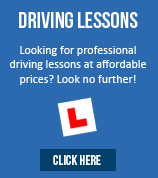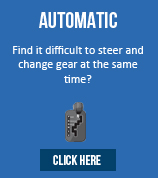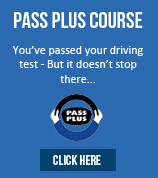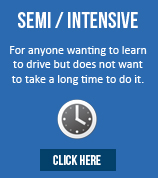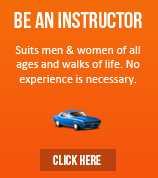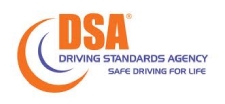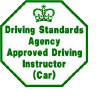- Home
- INSTRUCTOR TRAINING
- INSTRUCTORS/CARS
- DRIVING LESSONS DUNFERMLINE
- DRIVING LESSONS KIRKCALDY
- DRIVING LESSONS GLENROTHES
- DRIVING LESSONS ST ANDREWS
- DRIVING LESSONS KINROSS
- SEMI - INTENSIVE DRIVING COURSES
- AUTOMATIC DRIVING LESSONS
- THEORY TEST & VIDEO
- BOOK YOUR THEORY TEST
- HAZARD PERCEPTION
- INDEPENDANT DRIVING
- BOOK YOUR DRIVING TEST
- PASS PLUS
- REFRESHER LESSONS
- LESSON PRICES
- BOOKING FORM
- GIFT VOUCHERS
- CUSTOMER FEEDBACK
- TESTIMONIALS
- ONLINE STORE
- BECOME A FRANCHISEE
- Driving School Fife
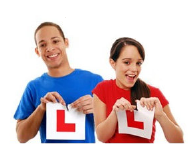
PRACTICAL TEST EXPLAINED
Practical test explained
Your driving test will start with the driving examiner checking your documentation, getting you to sign the driving assessment form, then an eyesight check and some vehicle safety questions. You will then start your practical driving test which will include a specific manoeuvre. The driving test will last about 35 - 40 minutes. Throughout the test your examiner will be looking for an overall safe standard of driving, including when you are carrying out the set manoeuvres.
Taking someone with you on your driving test
The Driving Standards Agency (DSA) encourages you to take someone with you on your driving test. This will usually be the person who has taught you to drive, but it could be a relative or a friend. They must be over 16 years old and cannot take any part in the test. The person who goes with you will be able to see how you perform during the test. To get the most benefit from this, it would be sensible to ask your instructor to go with you. They can then give you advice on how to improve your driving, whether you pass or fail.
Eyesight check
The eyesight test requires you to read a number plate from : - 20 meters for vehicles displaying the new-style number plate or 20.5 meters for vehicles displaying the old-style number plates. If you fail to read the number plate correctly, you will be asked to read a second number plate. If you can’t answer this correctly, they will get you to read a third number plate at the exact distance above.
If you fail to answer this correctly, then your test will not continue any further.
Vehicle safety questions
You will be asked two vehicle safety check questions.
One ‘show me’ and one ‘tell me’.
One or both of these questions answered incorrectly will result in one minor driving fault being recorded.
These questions are basic safety checks that a driver should carry out to ensure the vehicle is safe for use. Although some checks may involve the candidate opening the bonnet to identify where fluid levels would be checked, pupils will not be asked to touch a hot engine or physically check fluid levels.
As vehicle technology advances, more and more vehicles are being equipped with electronic diagnostic systems, which inform the driver of the state of the engine fluid levels and tyre pressures. It will be acceptable for a candidate to refer to the vehicle information system (if fitted) when answering.
Driving ability
You will then be examined on your general driving, including independent driving, one manoeuvre and possibly an emergency stop.
Your required manoeuvres will be either :-
. Reversing around a corner
. Turn in the road using forward and reverse gears
. Bay Parking
. Parallel Park
During the driving test the examiner will give you directions which you should follow, instruct you when to start the independant driving test.
Test routes are designed to be as uniform as possible and will include a range of typical road and traffic conditions.
Throughout the test you should drive in the way your driving instructor has taught you. If you make a mistake, don’t worry about it, just put it behind you and continue. The examiner will be looking for an overall safe standard of driving. You can make up to 15 driving faults and still pass the test. 16 or more faults results in failure. If you commit one serious or dangerous fault you will fail the test. If at any time your examiner considers you to be a danger to other road users your test will be stopped.
After the practical test
When the driving test has ended, you can call your instructor over, if they didn’t go with you on your driving test. This is so they can listen to the result and feedback with you. The examiner will tell you whether you passed or failed and will explain how you did during the test.
When you pass…
If you pass your driving test, and have a photo card driving licence issued after 1 March 2004 the examiner will ask you if you want your full driving licence issued to you automatically.
If you want to use this service, the examiner will take your old licence off you, scan the details and send them electronically to the Driver and Vehicle Licensing Agency (DVLA). You will then be given a pass certificate to prove you passed your test. DVLA will then send you your new full licence by post within four weeks of you passing your practical driving test.
If you pass your test but do not want to use this automatic service, or have a licence issued before 1 March 2004, you will be given a pass certificate by the examiner. On the back of the pass certificate it tells you what you need to do next. This involves sending your licence and appropriate fee to DVLA who will then check your application and issue you with a new full licence.
Please remember that you must apply for your driving licence within 2 years of passing your driving test, or your licence will be revoked and you will have to take the Theory and driving test again.
If you fail the test the examiner will give you some feedback to help prepare yourself for your next driving test. Your driving report form will also show you where you made any mistakes. The earliest that you can take another driving test is 10 working days.
What happens at your driving test ?
First off, the examiner will ask you to sign a form and show your ID. Then they’ll ask you to point out the car you’ll be driving and read another car’s number plate from the required minimum distance.
Then you will answer one ‘show me’ and one ‘tell me'{link to show me tell me page} vehicle safety question. Both answers need to be correct, or one driving fault will be recorded.
The examiner will be looking to see that you’re a competent and safe driver - responding to situations sensibly and making sound judgments. Apart from general driving, such as which direction to go, where and when to turn and stop, your examiner will ask you to carry out one manoeuvre :
You will also have to drive around 10 minutes, as part of the independent driving section of your Driving Test. Please see our Independent Driving Test page for more information.
Your examiner wants you to do well!!!
The examiner won’t say much in case it puts you off. Put any mistakes behind you and just concentrate on what’s happening. One minor error doesn’t mean a fail. Despite what you might have heard - there’s no quota for test passes or fails. If you’ve reached the required standard, you’ll pass your test. It actually takes 16 driving faults or one serious or dangerous fault to fail your driving test.

